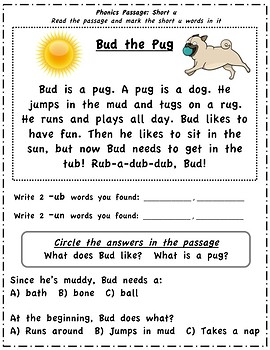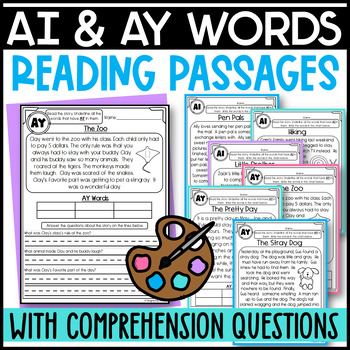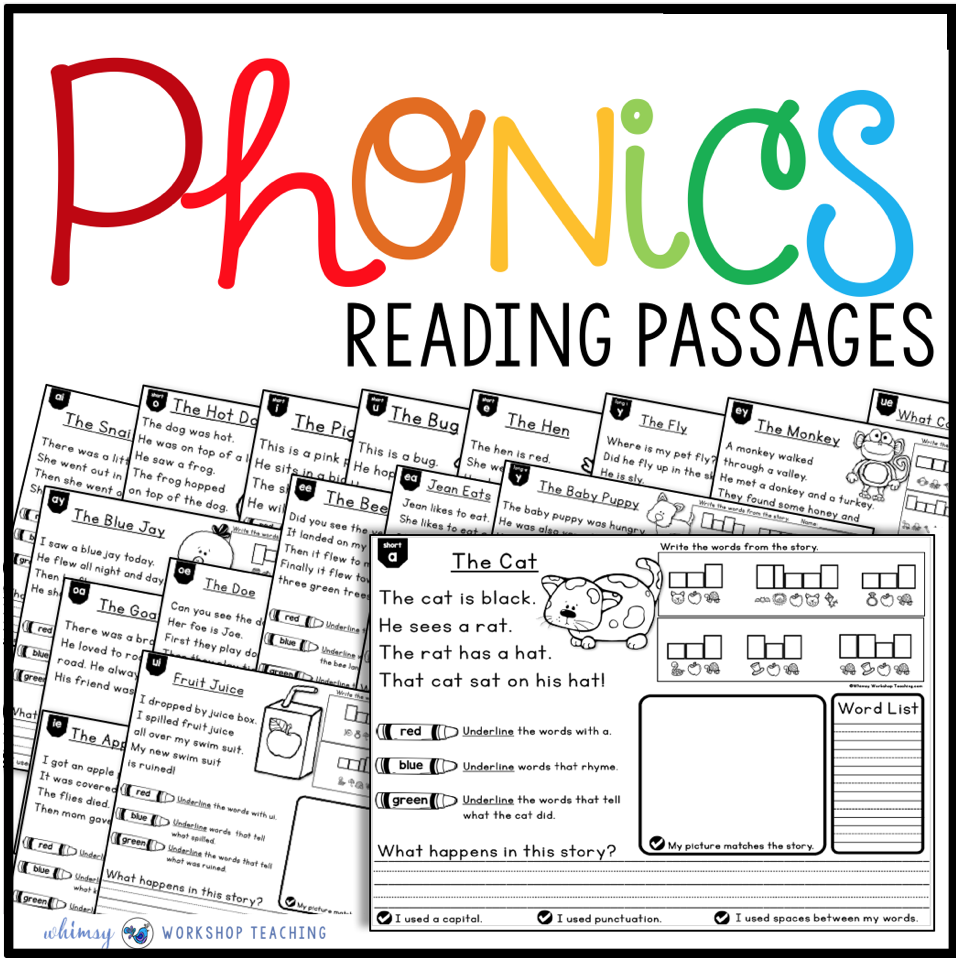Phonics Passages
If you're a teacher or a parent of a young child, you might be familiar with the term phonics passages. But what exactly are they, and why are they important? In this article, we will take a closer look at what phonics passages are and why they are essential for developing fluent readers.
The Pain Points of Learning Reading
Learning how to read can be a frustrating experience for some children, and it can be a challenge for parents and teachers as well. Understanding phonics, or the relationship between letters and their sounds, is crucial for building strong reading skills. However, it can be challenging to teach this concept, especially with children who have different learning styles or who struggle with reading in general.
The Target of Phonics Passages
Phonics Passages are designed to help children learn phonics in a more engaging and interactive way. These passages typically include short texts that are focused on specific sounds or word families, and they often include colorful illustrations to help keep young readers engaged.
Benefits of Phonics Passages
One of the main benefits of phonics passages is that they help build a strong foundation in phonics and reading skills. Through practice and repetition, children can gain a better understanding of how sounds and letters work together to form words. Phonics passages can also help promote reading fluency and comprehension, as children become more comfortable recognizing and decoding words.
Personal Experience with Phonics Passages
As an educator, I have used phonics passages with many of my students, and I have seen first-hand the positive impact they can have on reading skills. One of my students, a struggling reader, was able to make significant progress after incorporating phonics passages into our daily reading practice. The short and engaging stories helped her become more confident in her reading abilities and motivated her to read more on her own.
How to Use Phonics Passages
Phonics passages can be used in a variety of settings, including in the classroom or at home with parents. To use phonics passages effectively, it is essential to choose passages that are appropriate for the child's reading level and needs. It is also important to provide guidance and support as needed, especially when a child is struggling with a particular sound or word.
Understanding Word Families
Word families are groups of words that share a common pattern or sound, such as -at, -an, or -ig. By focusing on word families, children can learn to recognize patterns and apply them to new words. Phonics passages that focus on word families are an effective way to reinforce this concept and help children develop strong reading skills.
Tips for Using Phonics Passages
When using phonics passages, it can be helpful to incorporate other activities and games to reinforce the concepts introduced in the passage. For example, you can ask your child to identify words in the passage that belong to a specific word family or practice writing words from the passage. You can also provide opportunities for your child to read the passage aloud to develop fluency and confidence.
Question and Answer
Q: What age group is best suited for phonics passages?
A: Phonics passages can be used with children as young as preschool age and as old as first or second grade, depending on their reading level and needs.
Q: How can I choose the best phonics passages for my child?
A: Look for passages that are suited to your child's reading level and needs. Check for topics or themes that may interest your child and look for passages that include colorful illustrations or other engaging features.
Q: Can phonics passages be used as a standalone reading practice?
A: While phonics passages can be a valuable tool for building reading skills, they should not be used as the sole method for reading practice. It is important to also provide opportunities for children to read books, stories, and other types of text to further develop their skills.
Q: How often should I incorporate phonics passages into my child's reading practice?
A: this depends on your child's needs and reading level, but it is recommended to use phonics passages at least once or twice a week to help reinforce phonics concepts and improve fluency.
Conclusion
Phonics passages are an excellent tool for helping children develop strong phonics and reading skills. By incorporating these short and engaging texts into reading practice, children can become more confident and skilled readers. Whether you are a teacher or a parent, phonics passages can be an effective way to support young readers in their journey towards reading success.
Gallery
Phonics Passages: Short Vowels By Animals Art And Teaching | TpT

Photo Credit by: bing.com / short phonics passages vowels preview animals
Phonics Passages Bundle By Designed By Danielle | TpT

Photo Credit by: bing.com / passages phonics
Phonics Passages - Short Vowels

Photo Credit by: bing.com / passages phonics
Phonics Passages By Word Family

Photo Credit by: bing.com / phonics passages family word short reading sight words passage readers decoding these per three cvc practice include families vowels kindergarten
Phonics Passages - Whimsy Workshop Teaching

Photo Credit by: bing.com / phonics passages
